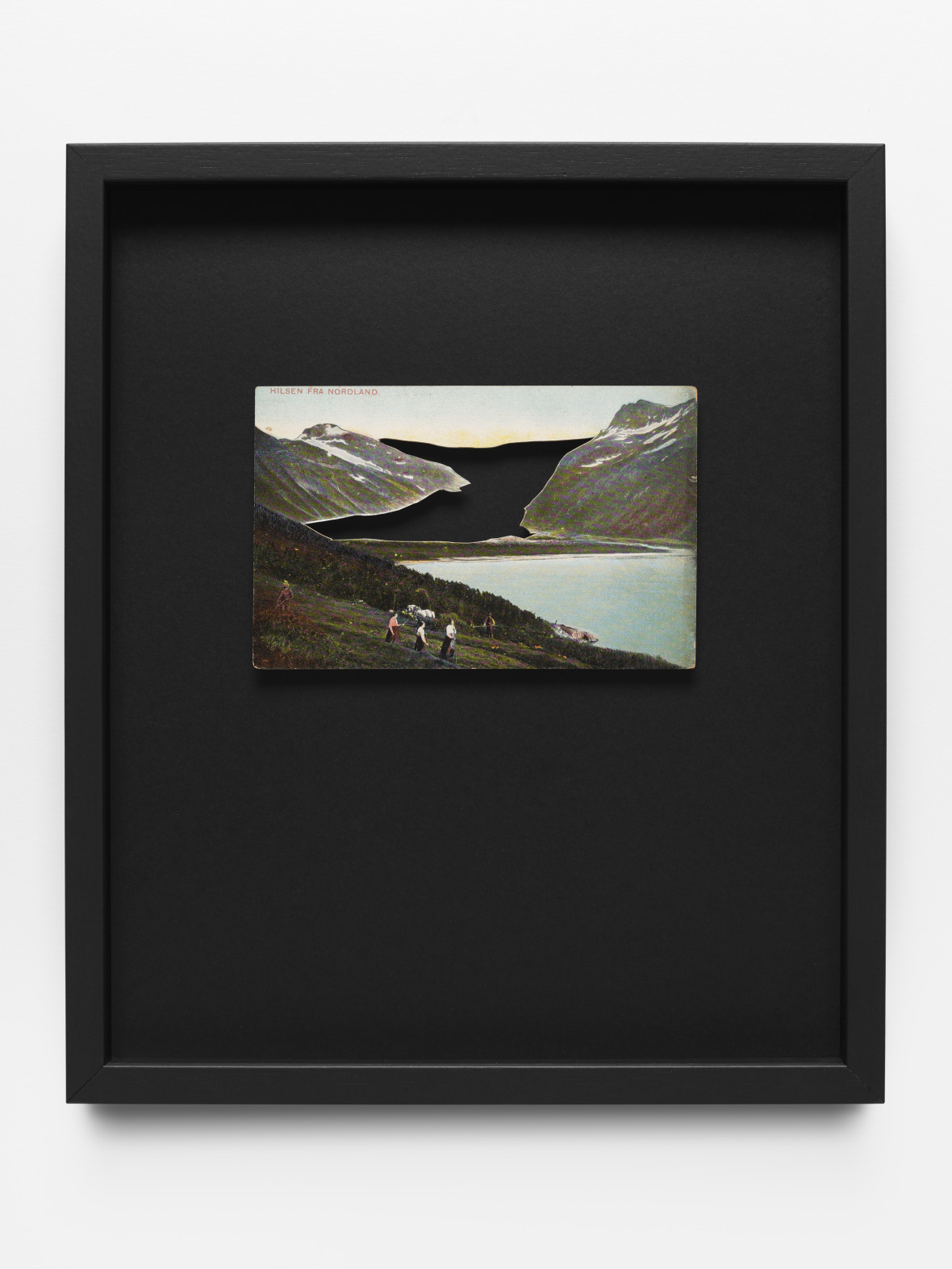A Different Look at the Arctic
11.07.2023
Conceptual artist Swaantje Güntzel is often asked: “Can’t you do something nice for a change?”. As she commences her year-long fellowship at RIFS, Güntzel is careful not to make any promises about her future work. And while the title of her project puts this question front and centre, she is not offering any answers. One thing is certain: her work will engage with a region that is especially important for sustainable development.

"The Arctic is often viewed as little more than a setting for cruise ships, adventure, polar bears, and snow-covered landscapes. I want to create images that offer new visual narratives and go beyond these perceptions," explains Swaantje Güntzel. The Hamburg-based artist will work alongside and take inspiration from scientists at the Research Institute for Sustainability (RIFS) and during a trip to the Arctic. Having disavowed air travel to protect the climate, Güntzel plans to travel to "where the last bus takes me" - most likely northern Norway.
Engaging with science
Since 2009, Güntzel has repeatedly worked alongside and in cooperation with scientists. In 2021, for example, she undertook a project in cooperation with the German Research Center for Artificial Intelligence (DFKI) in Oldenburg, creating a series of prints featuring abstract depictions of plastic waste. These works are based on images of different coastlines that were taken by researchers using drones and analysed with artificial intelligence.
Güntzel has also worked with biologist Melanie Bergmann from the Alfred Wegener Institute (AWI) in Bremerhaven on the topic of plastic waste for several years and will continue this collaboration during her fellowship. Marine plastic pollution affects the farthest reaches of the world's oceans and is the focus of many of Güntzel’s works, including an eye-catching portrait of her assistant "vomiting" pieces of plastic found in the stomach of an albatross chick on Kure Atoll (Northwestern Hawaiian Islands).

Environmental devastation against a panoramic backdrop
Some of Güntzel's more shocking works are likely to be perceived as activist art. She does not consider herself an activist, however. “I’m not interested in finger-wagging. Instead, I want to engage people on a sensory level. Each viewer will approach a work in a completely different way. Rather than pursing a particular didactic goal, I prefer to let people engage with my works on their own terms." As she explains, there is often a certain ambiguity to images of the Arctic, where environmental devastation unfolds against a panorama of breath-taking beauty.
Güntzel is not committed to a particular medium. Instead, she begins with an idea and then explores how it can best be expressed. Performance, sculpture, installation, photography, sound, and video are all part of her artistic repertoire. The common thread that runs through her work is the relationship between humans and nature, which she also intends to explore during her fellowship. “In this project I plan to explore the images that shape our perception of the Arctic and how we shape broader perceptions of the region by reproducing these images. It is important that we understand our own entanglement with various crises and how our behaviour contributes to them – and images play a big role in this." Broadening our visual vocabulary could make it easier for us to change our behaviour, Güntzel suggests, highlighting the transformative potential of art.
The results of this project will be shown at exhibitions in Hamburg next year, and there are also plans to stage an exhibition in the Berlin/Potsdam region. During her fellowship at RIFS Swaantje Güntzel will also give several talks and lectures.
Selected works by Swaantje Güntzel
About the works:
Swaantje Güntzel, 2020
JOANA // ingested
Diasec
112 x 80 cm
Image: Henriette Pogoda
© Swaantje Güntzel
VG Bild-Kunst Bonn 2023
This portrait depicts the artist's assistant "vomiting" fragments of plastic. The objects were retrieved from the stomach of a deceased albatross chick on Kure Atoll (Northwestern Hawaiian Islands). Produced with the support of the Kure Atoll Conservancy.
Swaantje Güntzel, 2021
APLASTIC – Q Serie (APLASTIC – Q Series)
Risograph print on Munken Polar Rough paper
42 x 29.3 cm
Images: Tobias Hübel
© Swaantje Güntzel
VG Bild-Kunst Bonn 2023
This series of risograph prints is based on images from the German Research Center for AI (DFKI) that depict the locations of marine waste identified on Spiekeroog and in Cambodia and Vietnam. The DFKI uses drones and a machine learning algorithm to detect and identify waste from the air. Produced with the support of Prof. Dr. Oliver Zielinski, Marine Perception Research Department / Oldenburg (DFKI).
Swaantje Güntzel, Katrin Bethge, 2022
Gletscherwasser / Grönländische Eisplatte 5 (Glacial water / Greenland Ice Sheet 5)
Watercolour on paper
44 x 55 cm
Images: Tobias Hübel
© Swaantje Güntzel
VG Bild-Kunst Bonn 2023
One of a series of watercolours created in collaboration with Hamburg-based artist Katrin Bethge. Güntzel commissioned Bethge to paint landscape formations inspired by the Arctic and Antarctic. The paints were prepared using melted snow from Antarctica and melted glacial ice sourced from the Greenland Ice Sheet from a depth of 2.2 km. Both meltwater samples were provided to the artists by the Alfred Wegener Institute for Polar and Marine Research in Bremerhaven (AWI).
Swaantje Güntzel, 2014
stomach contents XXL
Synthetic materials, metal
Height: 145 cm
Images: Alexander Burzik
© Swaantje Güntzel
VG Bild-Kunst Bonn 2023
This vending machine is filled with toys retrieved from the stomachs of dead Laysan albatrosses (Phoebastria immutabilis) on Kure and Midway Atolls (Northwestern Hawaiian Islands). Produced with the support of the Kure Atoll Conservancy.
Swaantje Güntzel, 2022
Svartisen Gletscher / Norwegen, 1910 (Svartisen Glacier / Norway, 1910)
Postcard (cropped)
29.7 x 25.3 cm (framed)
Image: Tobias Huebel
© Swaantje Güntzel
VG Bild-Kunst Bonn 2023
One of a series of processed images (found objects) in which the depicted glaciers were removed from the images and the fragments framed.
Contact





